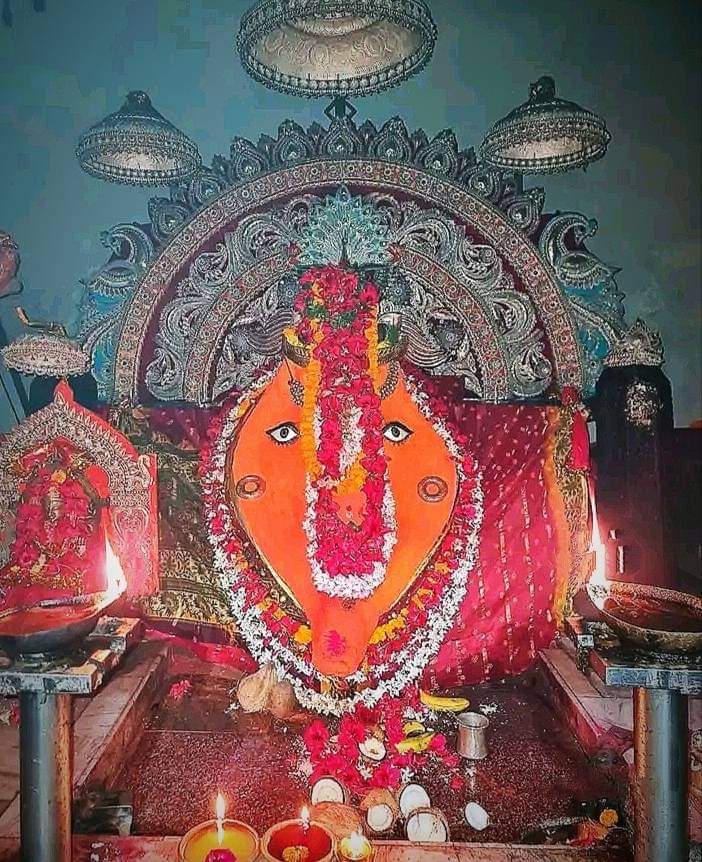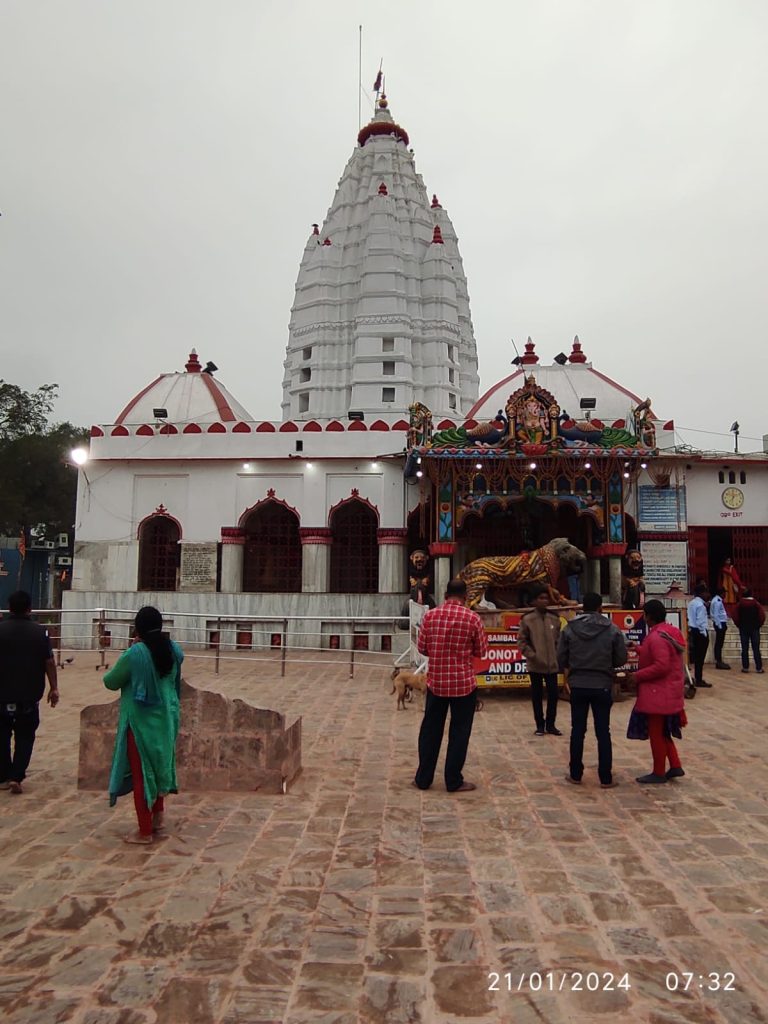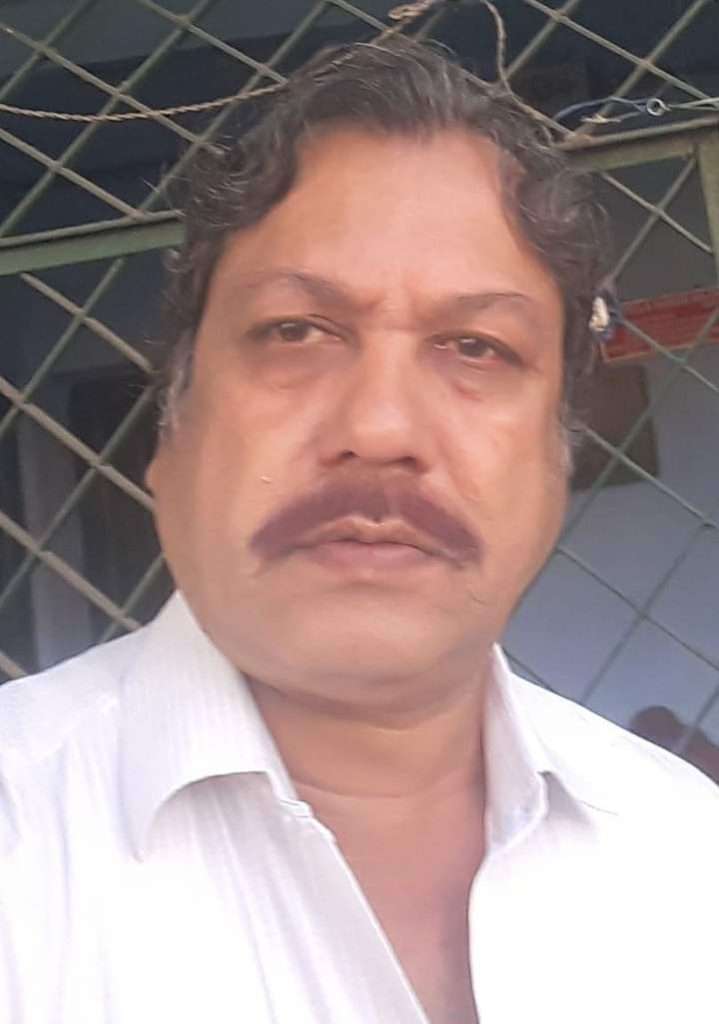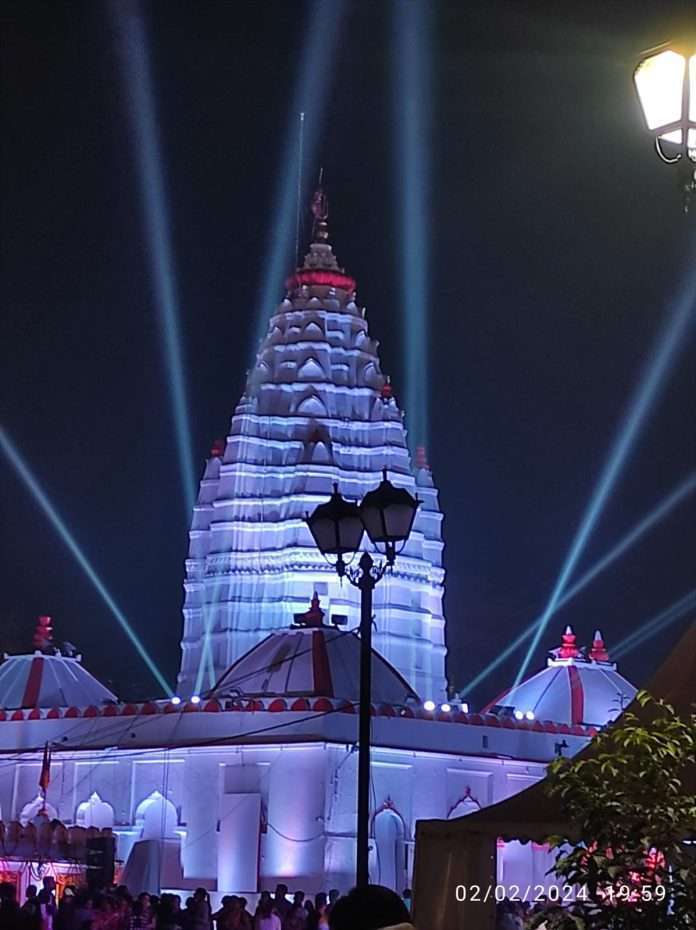Ever since my childhood days I have had the opportunity to grow in Mandiramalini (temple town) Sambalpur and under the glory and blessings of Maa Samlei or Maa Samaleswari.Like Sonepur which is called a temple town and the second Varanasi Sambalpur may also very well be called a temple town with a long array of old temples starting from Dalaipara chowk along Badsadak and Sansadak to Badbazar in addition to the newly constructed temples around the city dedicated to different gods and goddesses. During her My late grandmother sang the glory of Maa Samlei or Maa Samaleswari. She could instill a sense of devotion for Her in our childlike minds. How Maa Samlei rides on horseback and appears at night in troubled times.How She gives protection to her offspring. Along with Maa Samlei she also spoke of Maa Sureswari,Maa Metakani, Maa Ghanteswari and Maa Bindhyabasini. Once Maa Bindhyabasini had warned the village priest(Jhankar)in his dream before an epidemic broke out in the area. But the situation got out of control as he forgot to inform the people in time. There was a heavy toll of lives. Maa Pataneswari is also very strict and powerful. Once a woman carrying a ‘chatu'(a big slotted spoon with a long handle)was moving from door to door and asking for fire.Maa Pataneswari called her and the moment she saw Her she was turned to stone. It is also believed in Bolangir and Patnagarh areas that the Devi is powerful with miraculous powers. Listening to such myths about Maa Samlei and the other goddesses had exerted a profound influence on us children in creating a sense of faith and trust in Them. Later when we read history many a fact came to the fore.In the middle of the sixteenth century when there was a division of the Patna state junior brother Balaram Dev got the Sambalpur region called Huma Pradesh then as his domain.
Once while preying in Chaunrpur area on the other side of the Mahanadi in Sambalpur he saw his dogs fleeing in fear at the sight of a rabbit. Seeing this he could be aware of the glory of the place.Myth has it that Maa Samlei on the same night appeared in his dream and directed him to install Her as his presiding deity.Balaram Dev then built the Sambalpur fort and city.The temple of Maa Samaleswari in Sambalpur was built by him and the Chauhan rulers who succeeded him. Historians opine that much before this happened Devi Samlei was being worshipped by the local people under a ‘shimuli’ tree on one bank of the river Mahanadi.Since ‘shimuli’is called ‘semel’ in local language the name of the village first became Semelpur and later Samalpur or Sambalpur.In the second century Claudius Ptolemy,the Greek geographer has called this region ‘Sambalaka’.It is known from different historical accounts of French traveller Jean Baptiste Tavernier and British historian Edward Gibbon that once a diamond was exported to Rome from this region called Hirakhanda.

Balaram Dev was the first Chauhan ruler of Sambalpur. He fortified the city of Sambalpur.After that gradually there was the supremacy of the kingdom of Sambalpur and the glory of Maa Samaleswari spread to the other parts of western Odisha crossing the boundaries of Sambalpur.Balaram Dev was in good relations with Narasingha Dev,his elder brother and the king of the Patna state.The way Maa Pataneswari has been installed in the city of Sambalpur so also Maa Samaleswari has been installed in the town of Bolangir.A reading of history makes it clear as to how Maa Samaleswari and Maa Pataneswari are sisters.It is so since Narasingha Dev and Balaram Dev were brothers and Maa Pataneswari was the presiding deity of the Patna state before the division.In addition to Bolangir the temple of Maa Samaleswari can very well be seen in places like Sonepur,Sundargarh, Khariar,Laida and others.In the whole of western Odisha She is worshipped and revered.In addition to the Gramadevi in every village of the temple of Maa Samlei is also seen. She is most probably second to Lord Jagannath in terms of popularity.The speciality of the area is that there has been an amalgamation of the Shakta,Saiva and Vaishnava cults over here.
The glory of Maa Samaleswari is widespread.Western Odisha bears a testimony to many a myth and legend associated with Her.It is said that the system of human sacrifice was prevalent in the temple of Maa Samlei at Sambalpur.King’s attendants brought people from nearby and far off places and put them on the altar.Once they brought a hermit.The hermit requested the attendants to take him to the then king Madhukar Dev before sitting on the altar.He told the king to leave him inside the temple at night.Devi Herself would eat him up. Why should the king commit the sin of killing a hermit!Accordingly the hermit was left inside the temple at night and found alive the next morning.Devi is believed to have directed the king in his dream to stop human sacrifice at once.The hermit later became the
first Mahanta of the Gopaljee Math of Sambalpur. As per another legend once Lord Siva and Maa Parvati were returning to Kailash in the sky over this region. Enamoured of the beauty of the region Lord Siva installed Himself as Ashtashambhu in different places over here.

These places are mostly in the districts of Sambalpur and Bargarh. Seeing this Maa Parvati has also installed Herself in seven places.The Samlei Peetha of Sambalpur is one of them.The other Peethas are of Maa Sureswari,Maa Manikeswari,Maa Ghanteswari,Maa Pataneswari,Maa Metakani and Maa Chandrahasini.The glory of Maa Samlei is so widespread that there is a long array of myths and legends associated with Her.Coming to the rescue of a poor family of Chaunrpur,forcing Kalapahad and his soldiers to flee from the outskirts of Sambalpur town by hook or by crook and Devi Herself being Lankeshwari are some of the myths and legends associated with Her.It is believed that Lankeswari also known as Lankini or Lankadevi who acted as ‘Gadadevi’ for Ravana,the demon king of Lanka came over to Sambalpur on the request of Veer Hanuman and installed Herself as Maa Samlei.But as Lankeswari in Sonepur or Paschima Lanka of the olden times and Junagarh,the old capital of Kalahandi is worshipped as a separate goddess historians and researchers accept Her as a ‘Gadadevi’ and goddess of war.She is a powerful goddess and it is believed that in order to protect the fort She fights the enemy on the battlefield in person.As per another myth when Lord Siva started Tandava Nrutya carrying the dead body of Sati in His arms Lord Vishnu with His Sudarshan Chakra cut the dead body to pieces to save the universe from His wrath.Despite historians,researchers and purana experts having identified places in India,Pakistan,Nepal and Bangladesh where the pieces of the dead body of Sati have fallen it is strongly believed that one such piece has fallen on the Peetha of Maa Samlei in Sambalpur. Veer Surendra Sai ,the revolutionary freedom fighter of the region was a staunch devotee of Maa Samlei and remained so till his death.
Listening to the glory of Maa Samlei there has been a strong sense of respect and reverence for Her ever since my childhood days.Wherever in the country and state I am I remember Her and seek Her blessings in case of any problem.Maa Samaleswari not only lives in myths and legends but also in history.Today She has turned out to be the presiding deity of a huge mainland towering above caste,creed,colour, religion,myths and history.From a Semel tree on one bank of the river Mahanadi to Her being the presiding deity of a vast area and still continuing Her journey of glory is really a matter of pride.What to speak of the western and other parts of Odisha even from the neighbouring states like Chhattishgarh and Jharkhand devotees flock to have a darshan of the Devi and be one with Her.Maa Samlei is at a stretch Adishakti, Jagatjanani,Bhubaneswari,Mahaluxmi and Mahasaraswati-a symbol of faith and trust for the people of the area.’Nuakhai’,one of the most important festivals of western Odisha is celebrated only after ‘Bhoga’is offered to Her.She fulfills the desires of Her devotees, comes to their rescue in troubled times and gives them ‘Abhaya’.She is a symbol of faith and trust in the psyche of the people of western Odisha who consider themselves as Her offspring.
(The views expressed are the writer’s own)

Mr. Prafulla Kumar Majhi,
Retired Asst. Director, A. I. R, is an eminent Scholar and freelance writer in English & Odia. His areas of interests are sociocultural, economic, literary, historical and analytical studies and writings.

